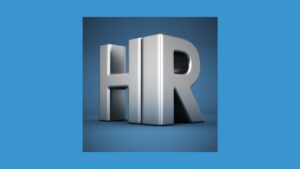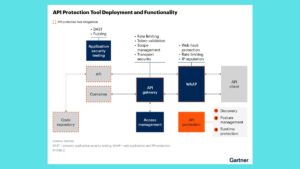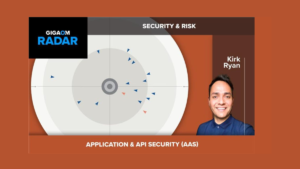Difference Between HRIS, HRMS, and HCM: A Comprehensive Guide

In the world of HR technology, terms like HRIS, HRMS, and HCM are often used interchangeably, but they have distinct meanings and functions. Each system plays a unique role in managing human resources, helping organizations streamline HR tasks, and enhancing workforce management. In this blog, we will explain the key differences between HRIS (Human Resource Information System), HRMS (Human Resource Management System), and HCM (Human Capital Management), along with their core features and benefits.
Understanding HRIS, HRMS, and HCM
Before diving into the differences, it’s important to have a basic understanding of each term:
- HRIS (Human Resource Information System)
- HRIS is a software solution that focuses on the storage, management, and retrieval of employee information. It serves as a central database for HR data, including personal details, job history, payroll, benefits, and attendance records. The primary goal of an HRIS is to help organizations automate and simplify the management of employee information while ensuring data accuracy and compliance with labor laws.
- HRMS (Human Resource Management System)
- HRMS is a broader software suite that includes the functionalities of an HRIS but goes beyond data management to cover additional HR functions such as talent management, performance tracking, learning and development, and employee engagement. In essence, HRMS encompasses more features aimed at managing the entire employee lifecycle, from hiring to retirement.
- HCM (Human Capital Management)
- HCM is a more comprehensive approach to HR that views employees as valuable assets, or “capital,” whose skills and talents can be optimized to achieve organizational goals. HCM encompasses a wide range of HR processes, including strategic planning, workforce analytics, succession planning, and employee development. HCM solutions integrate HRIS and HRMS functionalities with additional tools for strategic workforce planning and analytics.
Key Differences Between HRIS, HRMS, and HCM
Although HRIS, HRMS, and HCM share some similarities, they differ in scope, features, and purpose. Here’s a breakdown of their differences:
1. Scope and Focus
- HRIS:
- Primarily focused on the storage and management of employee information.
- Acts as a database for employee records, payroll, benefits administration, and compliance reporting.
- Suitable for organizations looking to automate basic HR tasks and ensure data consistency.
- HRMS:
- Broader in scope than HRIS, incorporating additional HR functions like talent management, performance tracking, and employee engagement.
- Supports the entire employee lifecycle, from recruitment to offboarding.
- Offers features like learning management, time and attendance tracking, and employee self-service.
- HCM:
- Takes a strategic approach to managing human resources, viewing employees as valuable assets to be optimized.
- Covers all aspects of HRIS and HRMS, plus workforce analytics, strategic planning, and succession planning.
- Aims to align HR practices with business objectives by focusing on employee development and organizational growth.
2. Core Features
- HRIS Features:
- Employee data management (personal details, job history, etc.).
- Payroll and benefits administration.
- Time and attendance tracking.
- Compliance reporting and record-keeping.
- Basic employee self-service capabilities.
- HRMS Features:
- Includes all HRIS features, plus:
- Recruitment and applicant tracking.
- Performance management and goal setting.
- Learning and development management.
- Employee engagement and feedback tools.
- Advanced employee self-service portals.
- HCM Features:
- Includes all HRMS features, plus:
- Workforce planning and analytics.
- Succession planning and career development.
- Compensation management.
- Strategic workforce planning.
- Talent optimization and workforce optimization tools.
3. Target Audience
- HRIS:
- Best suited for small to medium-sized businesses that need to manage employee records, payroll, and compliance efficiently.
- Ideal for organizations looking to automate basic HR functions without the need for extensive talent management tools.
- HRMS:
- Suitable for medium to large-sized organizations that require a comprehensive HR solution for managing the entire employee lifecycle.
- Ideal for companies seeking to improve employee engagement, talent management, and performance tracking.
- HCM:
- Designed for larger enterprises with complex HR needs, where strategic workforce planning is a priority.
- Suitable for organizations that view employees as key assets and aim to align HR practices with overall business objectives.
4. Strategic vs. Operational Focus
- HRIS:
- Primarily focuses on operational HR tasks such as payroll processing, attendance tracking, and compliance management.
- Streamlines administrative tasks to improve efficiency.
- HRMS:
- Combines both operational and strategic HR tasks, with a focus on employee performance, learning, and engagement.
- Enhances employee development and aligns HR activities with organizational goals.
- HCM:
- Emphasizes strategic HR functions, including talent development, workforce planning, and analytics.
- Aims to maximize the potential of the workforce as a competitive advantage for the organization.
How to Choose the Right HR Solution for Your Business
When choosing between HRIS, HRMS, and HCM, consider the following factors:
- Company Size and Complexity
- HRIS: Ideal for small to medium-sized companies with straightforward HR needs.
- HRMS: Suitable for growing businesses that require more comprehensive HR capabilities.
- HCM: Best for large enterprises with complex HR needs and a focus on strategic workforce planning.
- HR Objectives
- HRIS: If your primary goal is to automate data management and compliance tasks, HRIS is the right choice.
- HRMS: If you want to improve employee engagement, track performance, and develop talent, consider HRMS.
- HCM: For organizations looking to align HR strategy with business goals and optimize workforce potential, HCM is the best fit.
- Budget Constraints
- HRIS: Generally more affordable due to its limited scope.
- HRMS: May have a higher cost due to the additional features.
- HCM: Likely to be the most expensive option, given its comprehensive capabilities.
- Growth Plans and Future Needs
- If your organization plans to expand, consider an HR solution that can grow with you. HRMS and HCM systems often offer scalability, while HRIS may require upgrading as your HR needs evolve.
The Evolution of HR Technology: How HRIS, HRMS, and HCM Are Converging
In recent years, the lines between HRIS, HRMS, and HCM have started to blur as technology advances and HR solutions become more integrated. Modern HR software often combines elements from all three systems, providing a holistic approach to managing human resources. Some software vendors use the terms interchangeably to describe their platforms, which is why it’s crucial to understand the specific features and functionalities being offered.
Today, many organizations opt for cloud-based HR platforms that can be customized to include a mix of HRIS, HRMS, and HCM features. This convergence allows companies to tailor the system to their specific needs, whether it’s basic HR data management, employee development, or strategic workforce planning.
Popular HRIS, HRMS, and HCM Solutions
Several software providers offer solutions across HRIS, HRMS, and HCM categories. Here are some well-known platforms:
- HRIS Solutions:
- BambooHR: Focuses on small to medium-sized businesses with employee data management and basic HR functionalities.
- Zenefits: Offers core HR, payroll, and benefits administration.
- HRMS Solutions:
- Workday: Provides a broad suite of HR functions, including payroll, talent management, and learning.
- SAP SuccessFactors: A comprehensive platform covering recruitment, performance, learning, and workforce planning.
- HCM Solutions:
- Oracle HCM Cloud: Offers a full range of HCM capabilities, including workforce analytics, succession planning, and compensation management.
- Ultimate Software’s UltiPro: Combines HR, payroll, and talent management with a focus on workforce optimization.
Conclusion
Understanding the differences between HRIS, HRMS, and HCM is essential for selecting the right HR technology that aligns with your organization’s goals and growth plans. While HRIS focuses on data management and administrative tasks, HRMS covers the entire employee lifecycle, and HCM emphasizes strategic workforce management. By considering factors like company size, HR objectives, and budget, you can choose the right solution to enhance HR efficiency, employee engagement, and organizational success.
As HR technology continues to evolve, businesses should stay informed about new features and trends to ensure they are using the most effective tools for managing their workforce. Whether you opt for an HRIS, HRMS, or HCM, the right HR technology can empower your organization to achieve its HR and business objectives.






